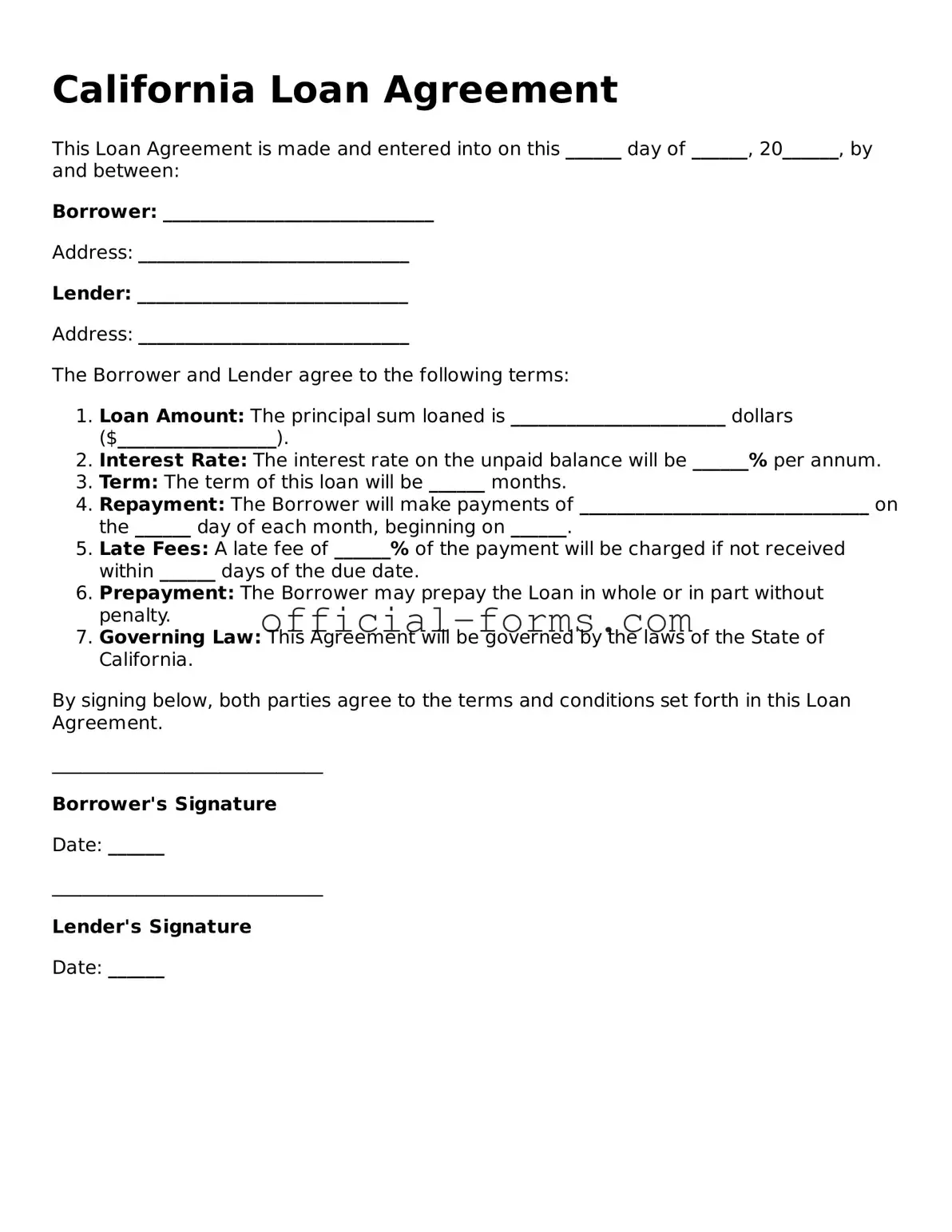Filling out the California Loan Agreement form can be a straightforward process, but many individuals make common mistakes that can lead to complications. One frequent error is failing to provide complete personal information. Borrowers often overlook details such as their full legal name, current address, or Social Security number. Incomplete information can delay processing and may even result in the rejection of the application.
Another mistake involves not clearly stating the loan amount. Borrowers sometimes write ambiguous figures or fail to specify whether the amount is in dollars or another currency. Clarity is essential to avoid misunderstandings later on. Always ensure that the loan amount is clearly indicated and formatted correctly.
Additionally, many people neglect to review the interest rate section. Some borrowers either do not understand how to calculate the interest or simply leave it blank. This can lead to disputes over repayment terms. It’s crucial to double-check this section and ensure that it reflects the agreed-upon rate.
Another common error is skipping the repayment terms. Borrowers often forget to specify how and when payments will be made. This oversight can create confusion and lead to missed payments. Clearly outlining the repayment schedule helps both parties understand their obligations.
People also frequently ignore the need for signatures. Some may assume that a verbal agreement is sufficient, but a signed document is essential for legal enforceability. Ensure that all parties involved sign the agreement to validate the terms.
Inadequate documentation is another significant mistake. Borrowers sometimes fail to attach necessary supporting documents, such as proof of income or credit history. These documents are vital for the lender to assess risk and make informed decisions.
Misunderstanding or misrepresenting the purpose of the loan can also lead to issues. Borrowers should clearly articulate why they are seeking the loan. Misrepresentation can not only jeopardize the loan approval but may also have legal ramifications.
People often overlook the importance of understanding the terms and conditions of the loan. Failing to read the fine print can lead to unexpected fees or penalties. Taking the time to thoroughly review the agreement can prevent future disputes.
Finally, some borrowers forget to keep a copy of the signed agreement. This document serves as a critical reference point for both parties. Without it, resolving any issues that arise later can become challenging. Always ensure that a copy is retained for personal records.
